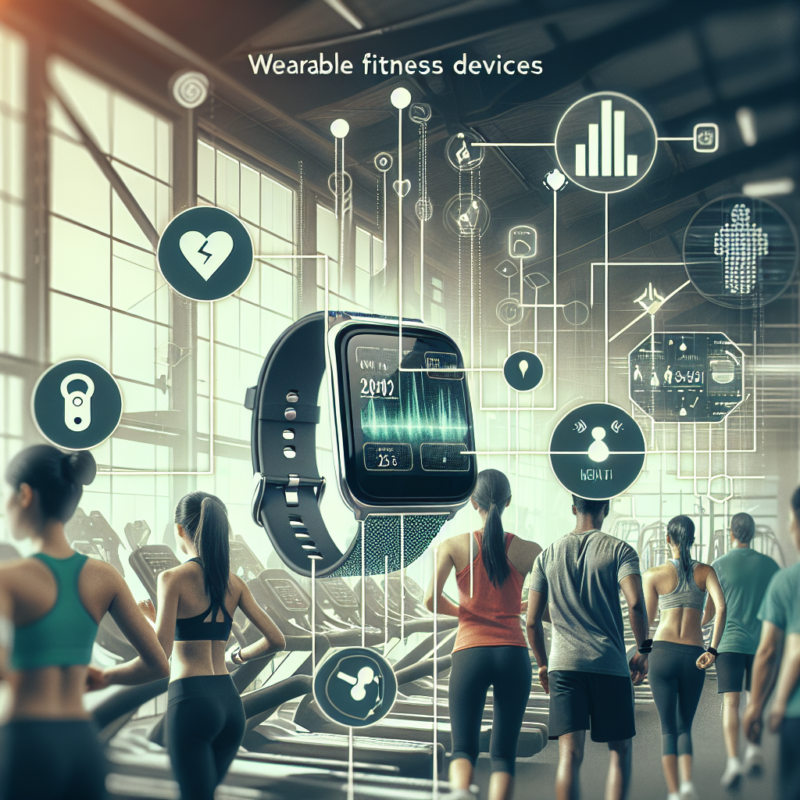In today’s fast-paced world, maintaining a healthy lifestyle is more crucial than ever. With the rise of wearable fitness technology, individuals are empowered to take charge of their health like never before. From tracking physical activity to monitoring vital signs, these devices offer a wealth of information that can significantly enhance health and wellness. In this article, we explore the myriad benefits of wearable fitness technology and how it can change your life for the better.
Understanding Wearable Fitness Technology
Wearable fitness technology refers to devices designed to track, analyze, and provide feedback on various health and fitness metrics. These gadgets can be anything from smartwatches and fitness trackers to smart clothing and health monitoring devices. Primarily, they gather data on physical activities, heart rates, sleep patterns, and even stress levels. The information collected allows users to gain insights into their health behaviors, making it easier to identify areas for improvement.
One of the most popular forms of wearable fitness technology is fitness trackers like Fitbit, Garmin, and Apple Watch. Each device comes with its set of features; for example, heart rate monitoring helps users understand their cardiovascular health better. Moreover, the evolution of technology has led to the emergence of smart clothing that can measure postures and muscle activity. By leveraging these advancements, individuals can make informed decisions about their health and well-being.
Promoting Active Lifestyles
A key benefit of wearable fitness technology is its ability to promote more active lifestyles. Many devices come equipped with features such as step counting, exercise reminders, and activity logs that encourage users to move more throughout the day. For instance, when you set a daily step goal, your device will vibrate or alert you when you’ve been sedentary for too long. This nudging can act as a significant motivator and can help keep individuals on track with their fitness objectives.
Furthermore, many wearable devices offer gamification elements, such as challenges and rewards, to make the pursuit of fitness more engaging. Users can compete with friends or family members, turning exercise into a fun and social activity. As users become more aware of their activity levels and progress, they are often motivated to incorporate more physical activity into their daily routines, effectively contributing to healthier lifestyles.
Enhancing Health Monitoring
Wearable fitness technology provides continuous and real-time health monitoring that equips users with valuable insights into their health metrics. With advanced sensors, these devices can track heart rates, blood oxygen levels, and even sleep quality. This level of monitoring allows users to recognize patterns and make proactive decisions regarding their health. For example, a consistent increase in resting heart rate may indicate overtraining or stress, prompting the user to adjust their exercise or lifestyle accordingly.
Moreover, these devices can serve as an early warning system for potential health issues. Many wearables come with features that can notify users of irregular heart rates, sleep disturbances, or excessive fatigue. By being attuned to their body’s signals, users can solicit medical advice sooner, preventing complications and improving overall health outcomes. This self-awareness fosters a proactive approach to health management, which is essential in today’s age of preventative medicine.
Facilitating Goal Setting and Achievements
Another significant advantage of wearable fitness technology is its ability to help users set, track, and achieve their health goals. With access to comprehensive data analytics, users can set realistic and attainable fitness objectives based on their performance metrics. For example, if your goal is to run a 5K in under 30 minutes, your wearable can help you track your pacing, distance, and heart rate to optimize your training regimen.
Additionally, the incorporation of mobile apps paired with these wearables allows users to visualize their progress over time with detailed graphs and statistics. This type of clear data representation can be incredibly motivating; it encourages users to stay committed to their goals and celebrate their achievements along the way. Plus, many devices offer personalization options, ensuring that the fitness plans created are unique to each user’s needs and preferences.
Integrating Wellness with Daily Life
Wearable fitness technology does not merely focus on physical activity but also integrates holistic wellness into daily life. Many devices provide insights into stress levels, promoting mindfulness, meditation, and mental health practices. Some wearables even include guided breathing exercises or reminders to take breaks throughout the day to maintain mental clarity and well-being. By incorporating these features, users can develop a more balanced approach to health, recognizing that physical and mental well-being are interconnected.
Furthermore, many wearables sync with various health applications, allowing users to monitor their nutrition, hydration, and sleep habits. By being aware of their daily nutrient intake and hydration levels, users can make healthier choices regarding their diet, enhancing their overall wellness. This comprehensive approach facilitates a well-rounded healthy lifestyle, optimizing every aspect of an individual’s well-being.
Conclusion
In summary, wearable fitness technology plays a transformative role in helping individuals boost their health and well-being. By promoting active lifestyles, enhancing health monitoring, facilitating goal setting, and integrating signals of wellness, these devices empower users to take control of their fitness journeys. As technology continues to evolve, the benefits of wearable fitness devices will only expand, making it easier for anyone to lead a healthier, more active life.
FAQs About Wearable Fitness Technology
What types of metrics can wearable fitness technology track?
Wearable fitness technology can track a variety of metrics, including steps taken, calories burned, heart rate, sleep quality, distance covered, and even stress levels. Some advanced devices can monitor blood oxygen levels and skin temperature as well.
Can wearable fitness technology help with weight loss?
Yes, wearable fitness technology can aid in weight loss by allowing users to track their physical activity and caloric intake. By providing insights into daily habits, users can make informed decisions to create a calorie deficit necessary for weight loss.
Are wearable fitness devices suitable for everyone?
Generally, yes! Wearable fitness devices cater to a wide range of users, from seasoned athletes to beginners. They can be customized to meet individual fitness levels and goals, making them a valuable tool for anyone looking to improve their health and fitness.
Is my data safe when using wearable fitness technology?
Most reputable wearable fitness technology companies prioritize user data privacy and security. They employ stringent data encryption and privacy policies; however, users should always review terms and conditions and ensure they understand how their data is being used.
How often should I wear my fitness tracker?
For optimal results, it is recommended to wear your fitness tracker all day, including during workouts and while sleeping. This allows for comprehensive data collection, enhancing your insights into daily activities and sleep patterns.
Embrace wearable fitness technology to not only boost your health but also enjoy a fuller, healthier life!



